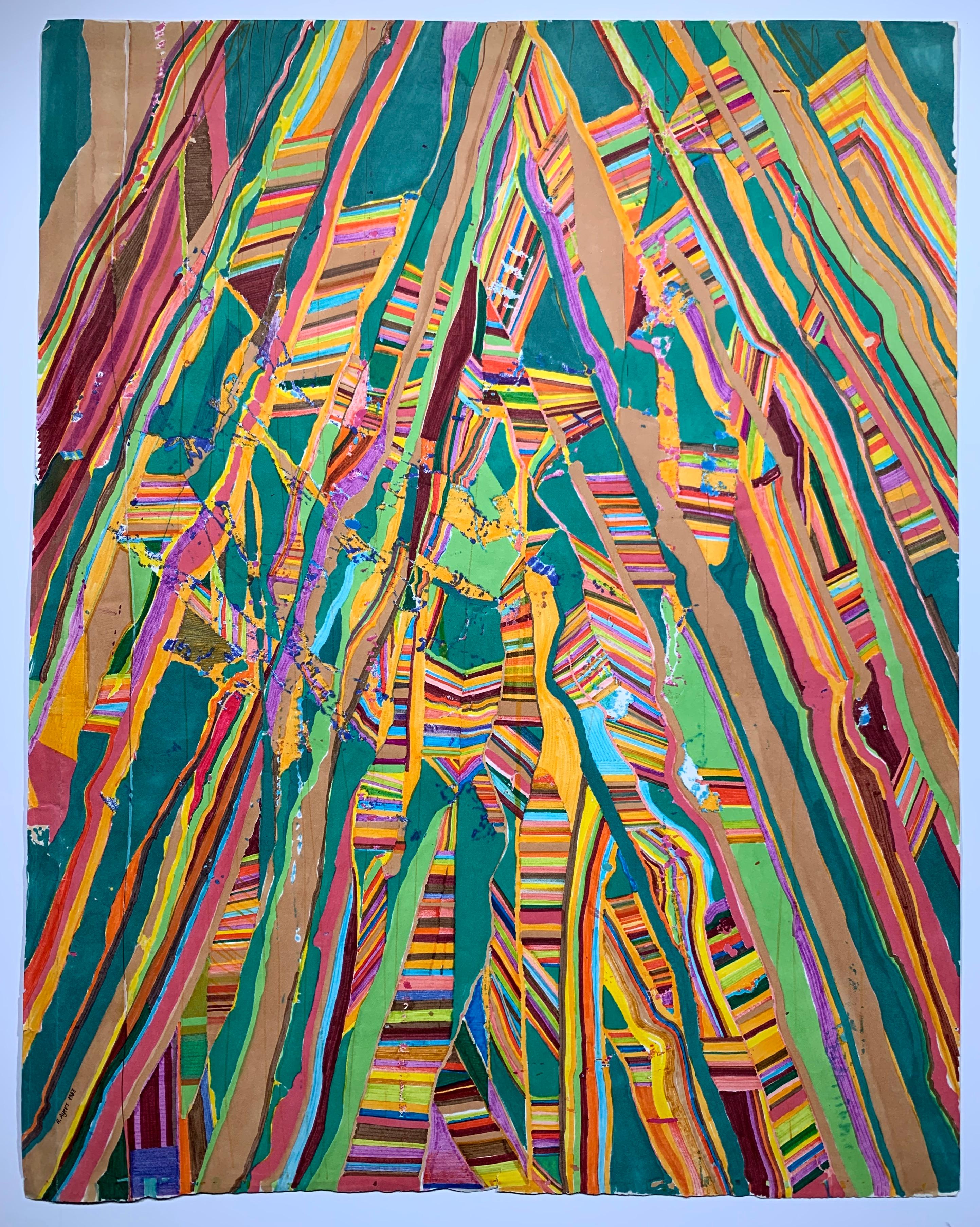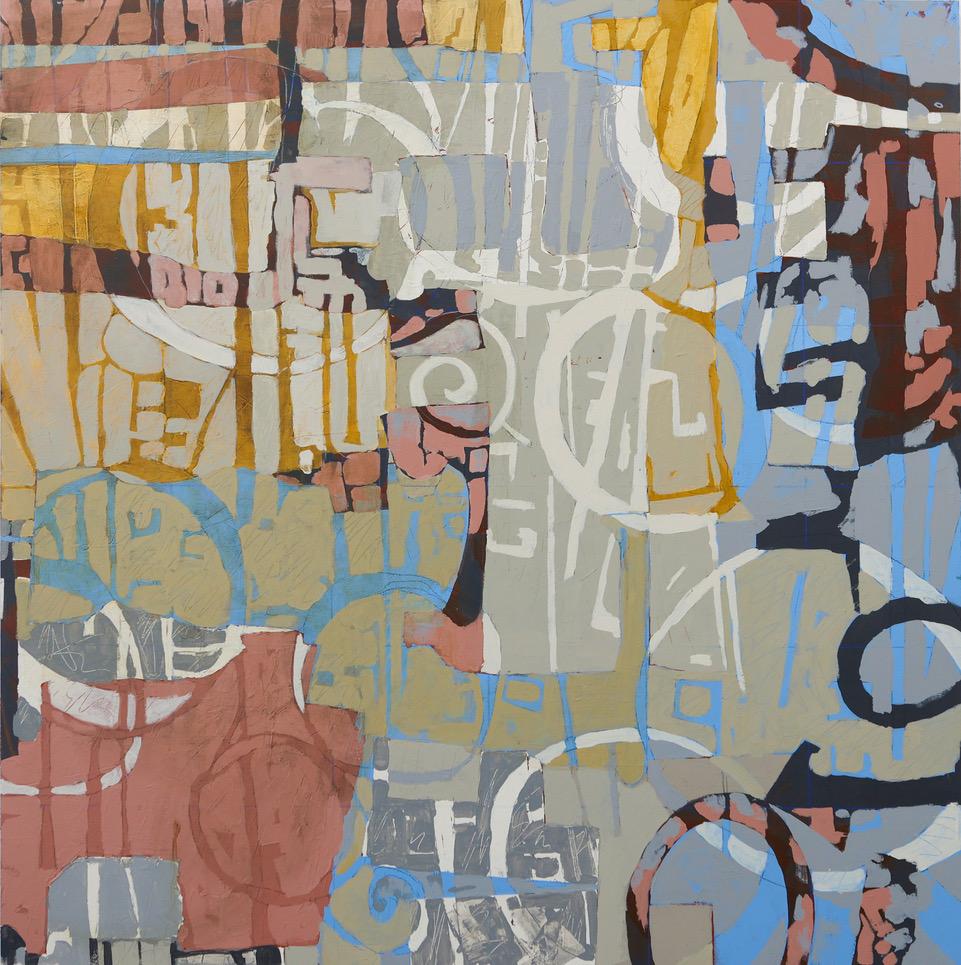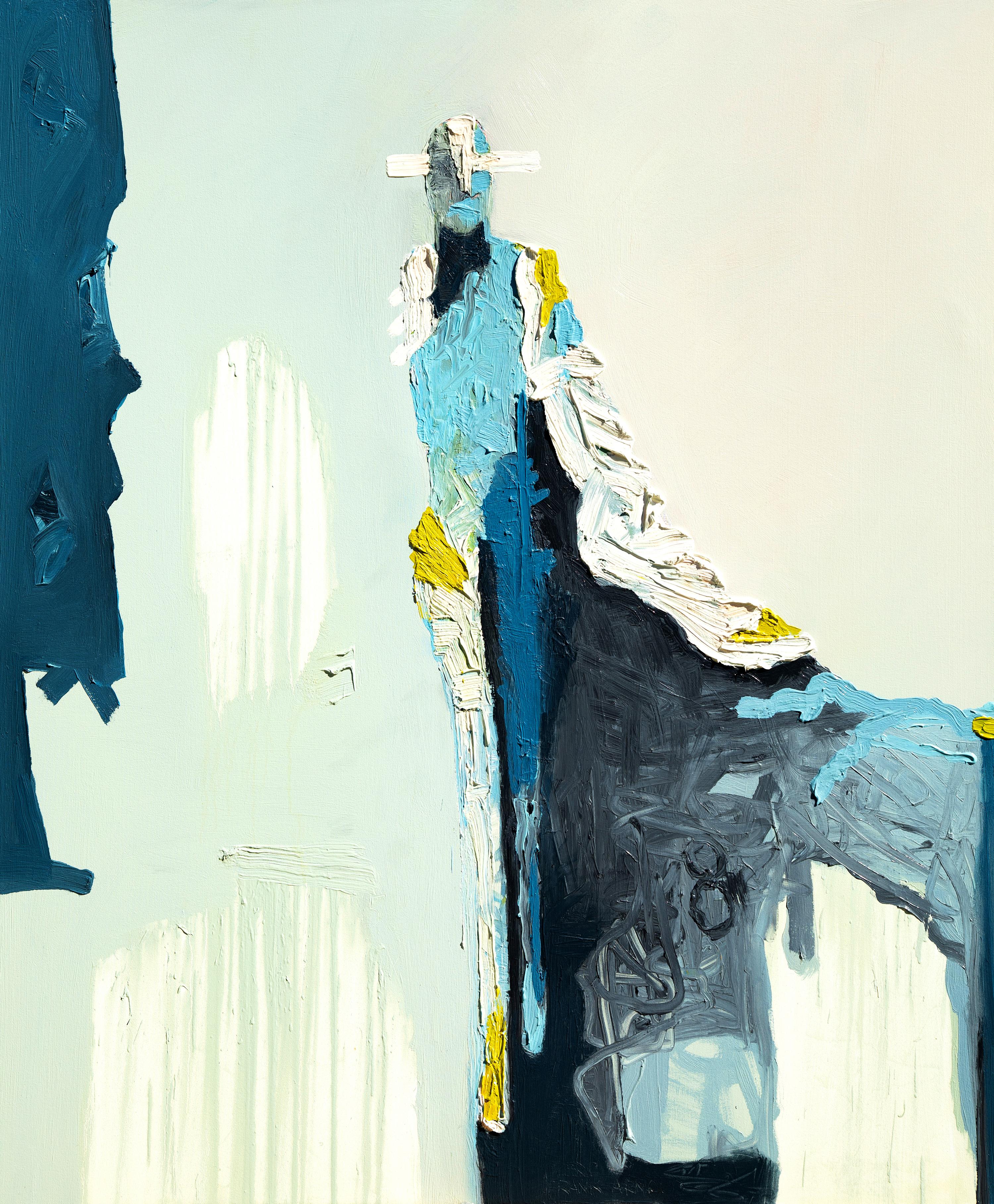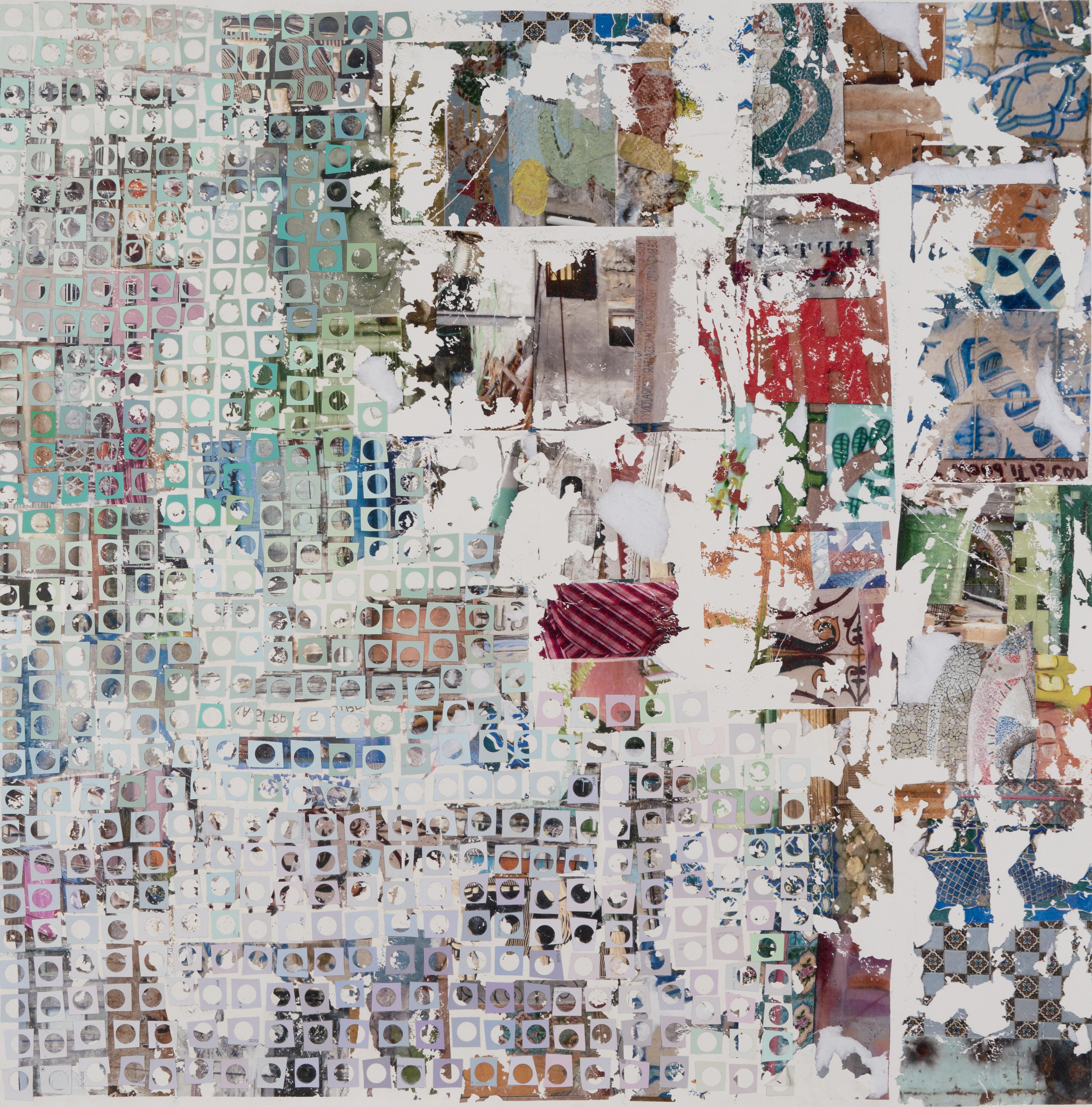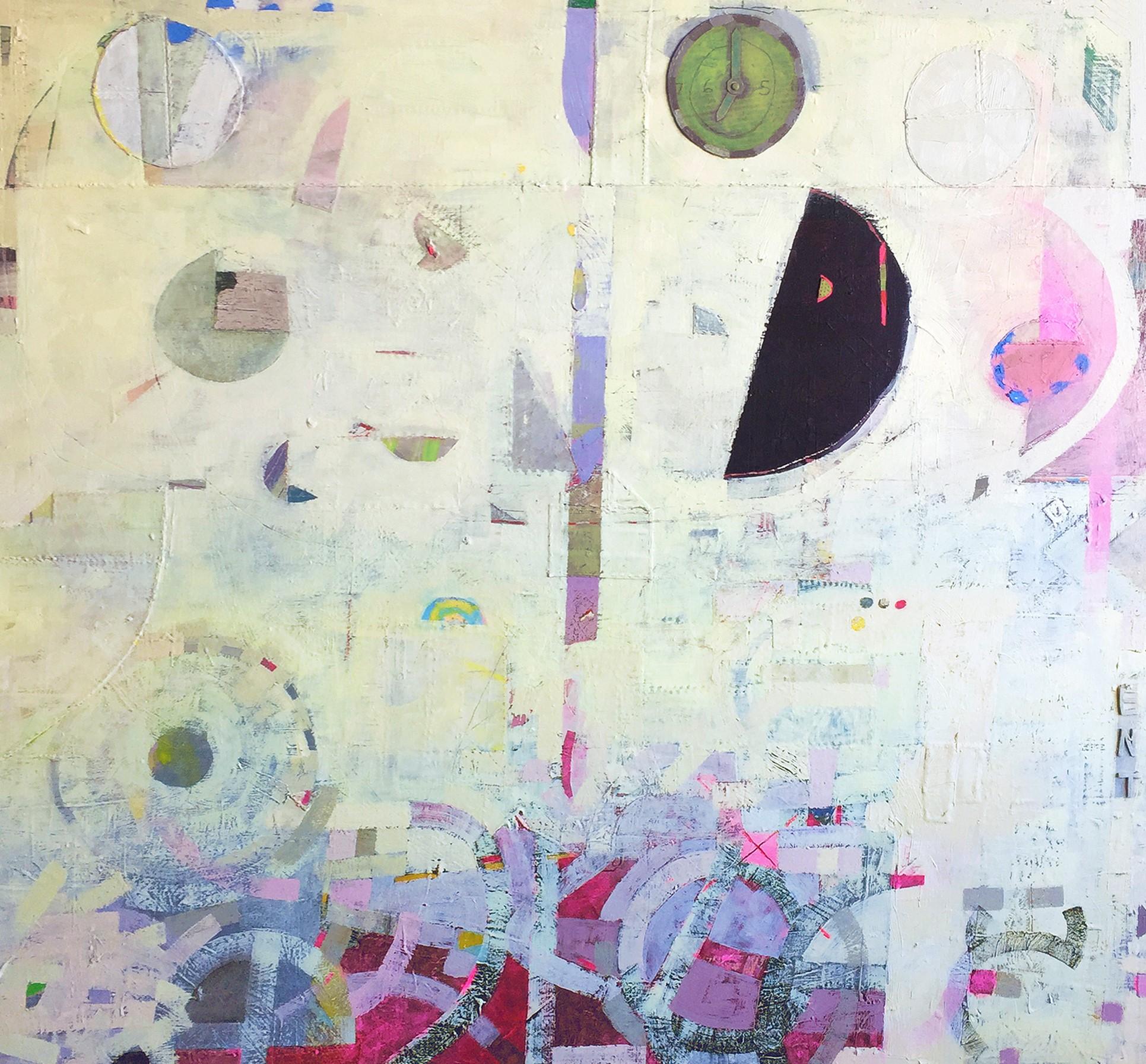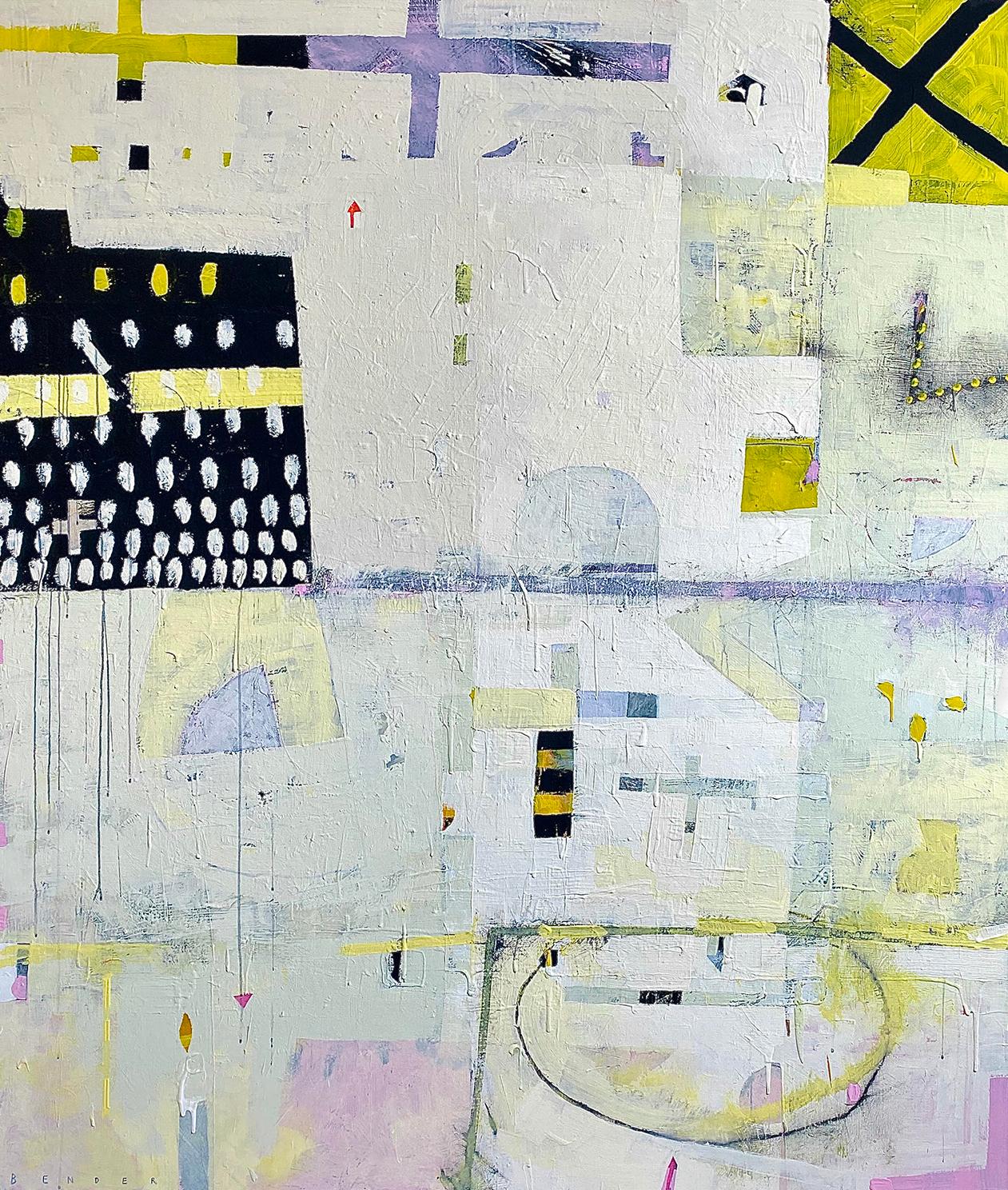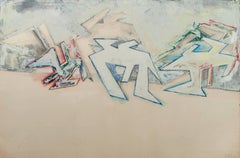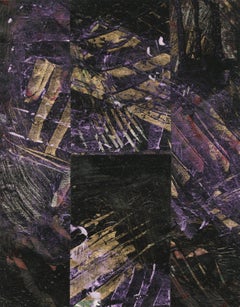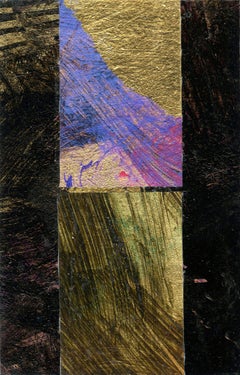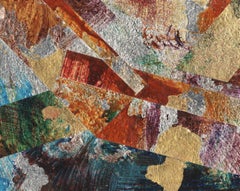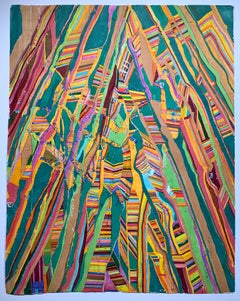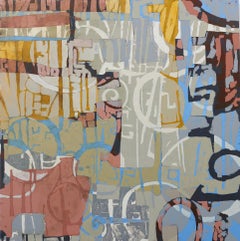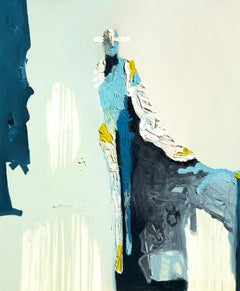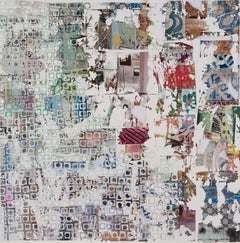Want more images or videos?
Request additional images or videos from the seller
1 of 12
Virginia DehnKandaharc. 1970
c. 1970
$5,500
£4,167.29
€4,781.64
CA$7,739.39
A$8,507.72
CHF 4,471.27
MX$103,314.66
NOK 55,777.91
SEK 52,845.65
DKK 35,686.58
About the Item
Kandahar
Acrylic and mixed media on fabric, c. 1970
Signed by the artist lower right (see photo)
Kandahar is one of the thirty-four provinces of Afghanistan, located in the southern part of the country next to Pakistan. Inspired by the Dehns visit to Afghanistan in the 1960's.
Provenance: Estate of the Artist
Dehn Heirs
Condition: Excellent
Canvas size: 18 x 20 inches
Virginia Dehn
From Wikipedia, the free encyclopedia
Virginia Dehn
Virginia Dehn in her studio in Santa Fe
Virginia Dehn (née Engleman) (October 26, 1922 – July 28, 2005) was an American painter and printmaker. Her work was known for its interpretation of natural themes in almost abstract forms. She exhibited in shows and galleries throughout the U.S. Her paintings are included in many public collections.
Life
Dehn was born in Nevada, Missouri on October 26, 1922.] Raised in Hamden, Connecticut, she studied at Stephens College in Columbia, Missouri before moving to New York City. She met the artist Adolf Dehn while working at the Art Students League. They married in November 1947. The two artists worked side by side for many years, part of a group of artists who influenced the history of 20th century American art. Their Chelsea brownstone was a place where artists, writers, and intellectuals often gathered.
Early career
Virginia Dehn studied art at Stephens College in Missouri before continuing her art education at the Traphagen School of Design, and, later, the Art Students League, both located in New York City. In the mid-1940s while working at the Associated American Artists gallery, she met lithographer and watercolorist Adolf Dehn. Adolf was older than Virginia, and he already enjoyed a successful career as an artist. The two were married in 1947 in a private ceremony at Virginia's parents house in Wallingford, Connecticut.
Virginia and Adolf Dehn
The Dehns lived in a Chelsea brownstone on West 21st Street where they worked side by side. They often hosted gatherings of other influential artists and intellectuals of the 20th century. Among their closest friends were sculptor Federico Castellón and his wife Hilda; writer Sidney Alexander and his wife Frances; artists Sally and Milton Avery; Ferol and Bill Smith, also an artist; and Lily and Georges Schreiber, an artist and writer. Bob Steed and his wife Gittel, an anthropologist, were also good friends of the Dehns. According to friend Gretchen Marple Pracht, "Virginia was a glamorous and sophisticated hostess who welcomed visitors to their home and always invited a diverse crowd of guests..." Despite their active social life, the two were disciplined artists, working at their easels nearly daily and taking Saturdays to visit galleries and view new work.
The Dehns made annual trips to France to work on lithographs at the Atelier Desjobert in Paris. Virginia used a bamboo pen to draw directly on the stone for her lithographs, which often depicted trees or still lifes. The Dehns' other travels included visits to Key West, Colorado, Mexico, and countries such as Greece, Haiti, Afghanistan, and India.
Dehn's style of art differend greatly from that of her husband, though the two sometimes exhibited together. A friend of the couple remarked, "Adolf paints landscapes; Virginia paints inscapes." Virginia Dehn generally painted an interior vision based on her feelings for a subject, rather than a literal rendition of it.] Many of her paintings consist of several layers, with earlier layers showing through. She found inspiration in the Abstract Expressionism movement that dominated the New York and Paris art scenes in the 1950s. Some of her favorite artists included Adolf Gottileb, Rothko, William Baziotes, Pomodoro, and Antonio Tapies.
Dehn most often worked with bold, vibrant colors in large formats. Her subjects were not literal, but intuitive. She learned new techniques of lithography from her husband Adolf, and did her own prints. Texture was very important to her in her work. Her art was influenced by a variety of sources. In the late 1960s she came across a book that included photographs of organic patterns of life as revealed under a microscope. These images inspired her to change the direction of some of her paintings. Other influences on Dehn's art came from ancient and traditional arts of various cultures throughout the world, including Persian miniatures, illuminated manuscripts, Dutch still life painting, Asian art, ancient Egyptian artifacts, and work by Giotto, Monet, Vuillard, Munch, and Bonnard, mixed with the modernism of the New York art scene. Her husband was a constant inspiration until his death in 1968.]
Later career
In the 1970s, Dehn began making large mixed media paintings with overlays of clay and acrylic. She moved from New York City to Santa Fe in 1985. She enjoyed the sense of space and calm there that could not be found in New York City. After moving to New Mexico, some of her paintings began to take on a sculptural quality, as she began working more with materials such as clay and metallic substances into her paintings. The metallic colors she used in some works showed her interest in the interaction of light and matter. The petroglyphs of the southwest interested her, and along with her study of ancient artifacts from Egypt and Asia. Some of her works began to feature what looked like hieroglyphics.
During her artistic career, Dehn received fellowships from Yaddo, MacDowell Colony and Ossabaw Island Project. Her work was exhibited in shows and galleries throughout the country, and her paintings are part of many public collections. A traveling show sponsored by the Albuquerque Museum of Art and History called "Layerists in Multi-media" included her paintings. She was given the Salmagundi Club prize for a still life painting in 1968 by the National Academy of Design.
In her later years, Dehn continued to create as she retained a circle of devoted friends and admirers. Despite health struggles, she kept painting until her death at her home in Santa Fe on July 26, 2005. Her work is currently represented by Thomas French Fine Art and the Bundy Modern.
- Creator:Virginia Dehn (1922 - 2005, American)
- Creation Year:c. 1970
- Dimensions:Height: 18 in (45.72 cm)Width: 20 in (50.8 cm)
- Medium:
- Movement & Style:
- Period:
- Condition:
- Gallery Location:Fairlawn, OH
- Reference Number:Seller: FA117491stDibs: LU14014911532
About the Seller
5.0
Recognized Seller
These prestigious sellers are industry leaders and represent the highest echelon for item quality and design.
Platinum Seller
Premium sellers with a 4.7+ rating and 24-hour response times
Established in 1978
1stDibs seller since 2013
813 sales on 1stDibs
Typical response time: <1 hour
Associations
International Fine Print Dealers Association
- ShippingRetrieving quote...Shipping from: Fairlawn, OH
- Return Policy
Authenticity Guarantee
In the unlikely event there’s an issue with an item’s authenticity, contact us within 1 year for a full refund. DetailsMoney-Back Guarantee
If your item is not as described, is damaged in transit, or does not arrive, contact us within 7 days for a full refund. Details24-Hour Cancellation
You have a 24-hour grace period in which to reconsider your purchase, with no questions asked.Vetted Professional Sellers
Our world-class sellers must adhere to strict standards for service and quality, maintaining the integrity of our listings.Price-Match Guarantee
If you find that a seller listed the same item for a lower price elsewhere, we’ll match it.Trusted Global Delivery
Our best-in-class carrier network provides specialized shipping options worldwide, including custom delivery.More From This Seller
View Alluntitled
By Dennis Ashbaugh
Located in Fairlawn, OH
Untitled
Mixed media on paper, 1979
Signed and dated ‘79 lower right (see photo)
Sheet size: 31 1/2 x 48"
Frame: 34 1/4 x 50 1/4"
Provenance:
Members Gallery, Albright-Knox Art Galle...
Category
1970s Abstract Abstract Paintings
Materials
Mixed Media, Oil
Untitled
By Peter Marks
Located in Fairlawn, OH
Untitled
Acrylic and gold leaf collage on canvas, 2005
Unsigned
Provenance: Estate of the Artist
Condition: Excellent
Image size: 10 13/16 x 8 5/8 inches
Support Sheet size: 17 x 14 ...
Category
Early 2000s Abstract Abstract Paintings
Materials
Acrylic
Untitled
By Peter Marks
Located in Fairlawn, OH
Untitled
Acrylic with gold leaf on canvas collage mounted on canvas, c. 2002
Unsigned
Provenance: Estate of the Artist
Condition: Excellent
Imag...
Category
Early 2000s Abstract Abstract Paintings
Materials
Oil
$600 Sale Price
50% Off
Untitled
By Peter Marks
Located in Fairlawn, OH
Untitled
Acrylic on canvas collage embedded with glitter and gold leaf. 2005
Unsigned
Provenance: Estate of the Artist
Condition: Excellent
Image size: 7 7/8 x 10 inches
Support shee...
Category
Early 2000s Abstract Abstract Paintings
Materials
Acrylic
$1,850
Untitled
By Peter Marks
Located in Fairlawn, OH
Untitled
Acrylic on canvas collage embedded with glitter and gold and sliver leaf, 2005
Unsigned
Provenance: Estate of the Artist
Condition: Excellent
Image size: 6 x 6 15/16 inches
...
Category
Early 2000s Abstract Abstract Paintings
Materials
Acrylic
Untitled
By Dennis Ashbaugh
Located in Fairlawn, OH
Untitled
Mixed media on paper, 1981
Signed and dated 1981 lower left (see photo)
Provenance:
Knoedler Gallery, New York (label)
Charles Cowles Gallery, New York
The Collection of Jan...
Category
1980s Abstract Abstract Paintings
Materials
Mixed Media, Gouache
You May Also Like
Untitled
By Roland Ayers
Located in Wilton Manors, FL
Roland Ayers (1932-2017). Untitled, 1983. Ink on paper, measures 17 x 23 inches. Unframed and unmounted. Signed and dated lower left. Ayers holds the distinction of having participated in the first important survey of African-Americans, Contemporary Black Artists in America, a 1971 show at The Whitney.
Biography:
Artist and art educator, Roland Ayers was born on July 2, 1932, the only child of Alice and Lorenzo Ayers, and grew up in the Germantown district of Philadelphia. Ayers served in the US Army (stationed in Germany) before studying at the Philadelphia College of Art (currently University of the Arts). He graduated with a BFA in Art Education, 1954. He traveled Europe 1966-67, spending time in Amsterdam and Greece in particular. During this period, he drifted away from painting to focus on linear figurative drawings of a surreal nature. His return home inaugurated the artist’s most prolific and inspired period (1968-1975). Shorty before his second major trip abroad in 1971-72 to West Africa, Ayers began to focus on African themes, and African American figures populated his work almost exclusively.
In spite of Ayers’ travel and exploration of the world, he gravitated back to his beloved Germantown, a place he endowed with mythological qualities in his work and literature. His auto-biographical writing focuses on the importance of place during his childhood. Ayers’ journals meticulously document the ethnic and cultural make-up of Germantown, and tell a compelling story of class marginalization that brought together poor families despite racial differences. The distinctive look and design of Germantown inform Ayers’ visual vocabulary. It is a setting with distinctive Gothic Revival architecture and haunting natural beauty. These characteristics are translated and recur in the artist’s imagery.
During his childhood, one of the only books in the Ayers household was an illustrated Bible. The images within had a profound effect on the themes and subjects that would appear in his adult work. Figures in an Ayers’ drawing often seem trapped in a narrative of loss and redemption. Powerful women loom large in the drawings: they suggest the female role models his journals record in early life. The drawings can sometimes convey a strong sense of conflict, and at other times, harmony. Nature and architecture seem to have an antagonistic relationship that is, ironically, symbiotic.
A critical turning point in the artist’s career came in 1971 when he was included in the extremely controversial Whitney Museum show, Contemporary Black Artists in America. The exhibition gave Ayers an international audience and served as a calling card for introductions he would soon make in Europe.
Ayers is a particularly compelling figure in a period when black artists struggled with the idea of authenticity. A questioned often asked was “Is your work too black, or not black enough?” Abstractionists were considered by some peers to be sell-outs, frauds or worse. Figurative* work was accused of being either sentimental or politically radical depending on the critical source. Ayers made the choice early on to be a figurative artist, but considered his work devoid of political content.
Organizations such as Chicago’ s Afri-Cobra in the late 1960‘s asserted that the only true black art of any relevance must depict the black man and woman...
Category
1980s Abstract Abstract Paintings
Materials
Paper, Ink
$960 Sale Price
20% Off
Cadence I
By Carol O'Malia
Located in Park City, UT
CAROL O'MALIA received a BFA from Rhode Island School of Design and MFA from University of Massachusetts-Dartmouth. Her paintings have caught the attention of both private and corpo...
Category
2010s Abstract Abstract Paintings
Materials
Acrylic, Panel
Mat 58
By Frank Arnold
Located in Fresno, CA
"Mat 58" Oil on Canvas with wide range of blue pigment and accents of yellow ochre. Frank Arnold is thought by many to be one of the foremost abstract figurative painters and sculpto...
Category
2010s Abstract Abstract Paintings
Materials
Canvas, Oil
$88,800
Remains
Located in Dallas, TX
mixed media collage on paper
Category
2010s Abstract Abstract Paintings
Materials
Mixed Media, Paper
Unbound
By David Bender
Located in New York, NY
Abstract piece on canvas. Textural quality from layering of paints. Not framed. But canvas is painted on the sides.
About the Artist:
David Bender is an award-winning Brook...
Category
2010s Abstract Abstract Paintings
Materials
Canvas, Acrylic
Here & There
By David Bender
Located in New York, NY
Abstract piece on canvas. Textural quality from layering of paints. Yellows. Pinks. Black. White. Not framed. But canvas is painted a soft yellow on the sides.
About the...
Category
2010s Abstract Abstract Paintings
Materials
Canvas, Mixed Media
$9,600
More Ways To Browse
Used Artist Easels
Paris Street Scene Painting Large Canvas Painting
Ancient Egyptian Art
Atelier Desjobert
Sally Avery
Vintage Brownstones
Illuminated Miniature
Miniature Still Life Painting
Bamboo Pen
Miniature Dutch Painting
Bill Smith
Persian Manuscript
Persian Illuminated Manuscript
Yorkshire Moors
Abstract Paintings Simplicity
Alan Lachman
Artemis Painting
Beach House Abstract Art
